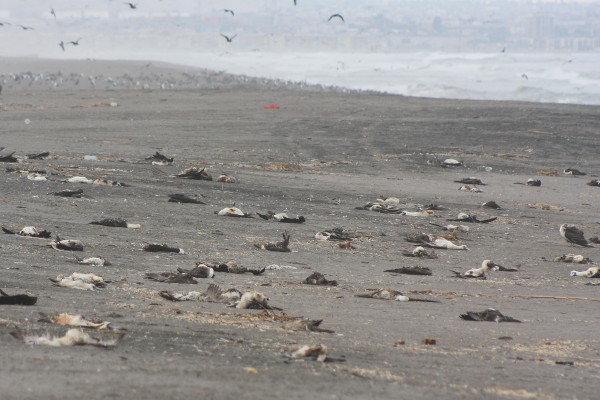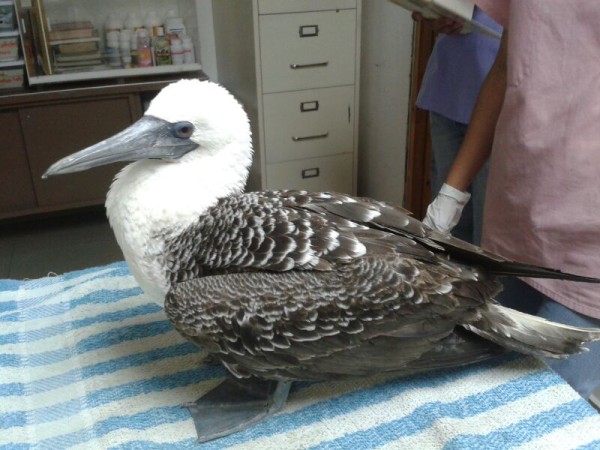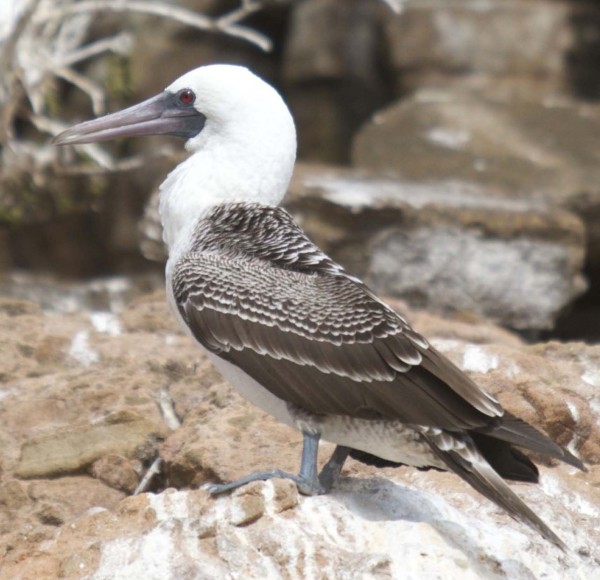
Peruvian boobies normally live along the western coastline of South America from Chile to southern Ecuador (some 600 miles - 966 kilometers - to the east of the Galápagos) where they feed on anchovies that thrive in the cold, productive water of the Humboldt Current.
In a typical year, the birds don't stray much farther than 40 miles (64 kilometers) from their homes. But it may not be a typical year. Instead, a growing El Niño weather pattern in the Pacific may have stirred up the boobies. And that could be bad news, leading to the starvation of thousands of seabirds.
Peruvian boobies are known for abandoning their normal feeding grounds when strong El Niños hit, sometimes traveling as far as Panama (850 miles, or 1,368 kilometers, to the north) in search of food.
"During El Niño conditions the likelihood of citing vagrant [Peruvian boobies] is much higher than during normal, non-El Niño conditions," said Carlos Zavalaga, a seabird biologist at the Universidad Cientifica del Sur in Lima, Peru.
Wayward Boobies
And 2014 may be shaping up to be one such year.
In addition to the Galápagos sighting, another Peruvian booby turned up in Panama on June 22. The bird was taken to a veterinary facility, thin and in poor health. It could not be saved and ended up dying that evening.
It was the first record of the species for the Central American country since the massive El Niño event of 1982-83, when thousands of Peruvian boobies hunkered down in the Gulf of Panama.

The Peruvian government issued a statement that more than 6,000 seabirds were found dead along the country's beaches in the last two weeks of June, reportedly victims of starvation. Nearly 80 percent of the dead birds were Peruvian boobies, but they also included Guanay cormorants, blue-footed boobies, and Peruvian pelicans.
Similar reports came in late June from northern Chile, where marine biologist Ronny Peredo and others counted thousands of dead seabirds.
Harbingers of El Niño?
These events are "probably related to the fact that there's a building El Niño right now," said David Anderson, a seabird biologist at Wake Forest University in North Carolina.
Sea surface temperatures skyrocketed this spring over the eastern equatorial Pacific. In June they were as much as 3.6º Fahrenheit (2ºC) above average.
This kind of ocean warming is one of the hallmarks of El Niño. The water along the Peruvian coast is normally cold due to upwelling, but during El Niño events the westerly trade winds weaken and warm water builds up in the eastern equatorial Pacific. (Watch Video: "El Niño.")
Anchovies - which Peruvian boobies are specialized for feeding on - prefer cold waters. When waters grow warmer, they move north and south. Some also move to cooler, deeper waters where they are inaccessible to seabirds. Mass emigration of anchovies from the birds' normal feeding grounds is the most likely cause of recent booby deaths, according to the Peruvian government.
The anchovy migration may have also spurred a few lone individuals to seek food in far-off places like the Galápagos and Panama.
El Niño Uncertainty
Climatologists have yet to declare the official arrival of El Niño, the phenomenon that was once thought to be restricted in its effects to Peru but is now known to impact climate in all corners of the globe. (See "Will El Niño Knock Down 2014′s Hurricanes?")
Yesterday the United States' National Oceanic and Atmospheric Administration (NOAA) released a monthly update, which said that "the chance of El Niño is about 70% during the Northern Hemisphere summer and is close to 80% during the fall and early winter."
Essentially, some of the wheels have been set in motion for an El Niño but climatologists are still waiting to see what transpires next.
"What happens along the Peruvian coast is really a wild card because the variability there is much greater than in the central part of the [Pacific] Basin," said Michael Halpert, Deputy Director of NOAA's Climate Prediction Center. So forecasters at NOAA are waiting to see other indications that El Niño has taken form, he said. (See "Is El Niño Back? Climate Scientists Forecast Its Arrival.")
In the meantime, birders in the Galápagos and Central America be warned: Keep your binoculars peeled for wayward boobies.




Reader Comments
I'm with you Hugh Mann El Nino my ass!